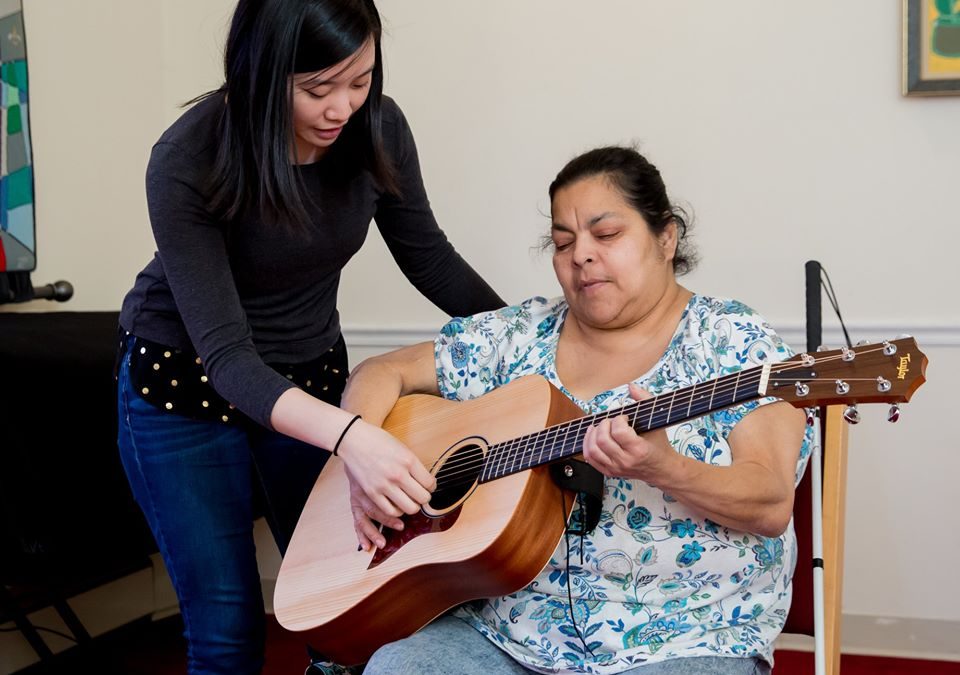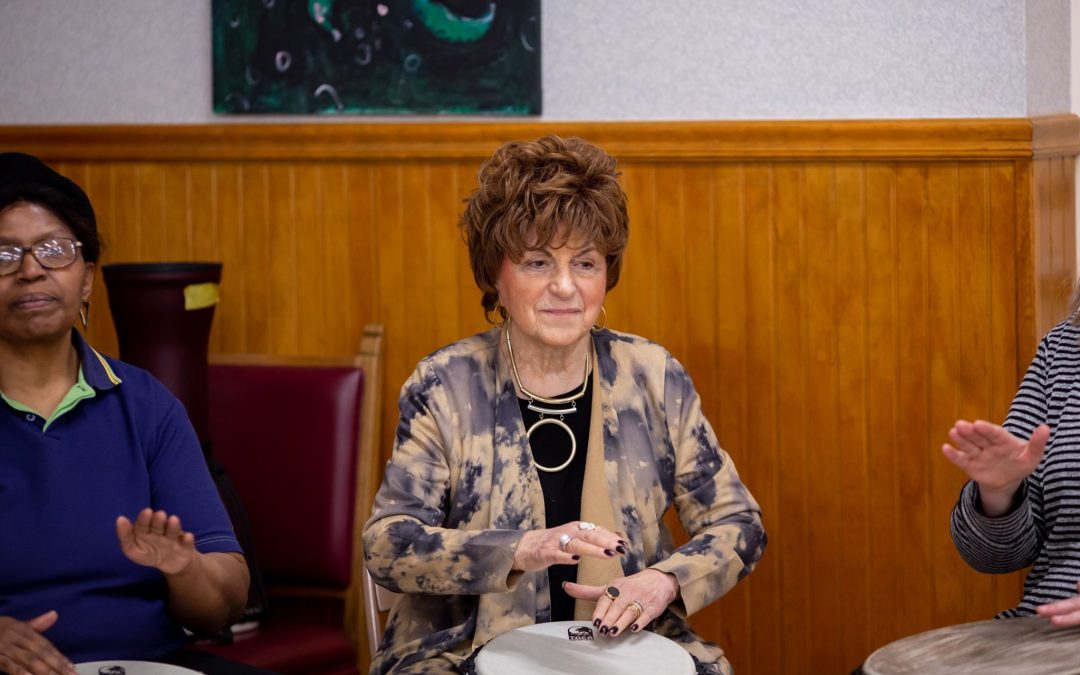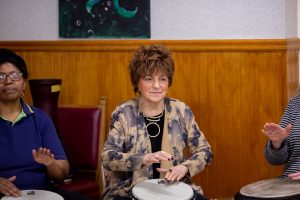
by admin | Dec 10, 2019 | Blog, News
Program Highlight!
Music Appreciation is part of our Health and Wellness Program. In this course, students experience all genres of music and learn to interact with different instruments. Learning to identify sounds and specific instruments will lead to better auditory skills, along with enjoying a world of music and healing.
Added benefit? Enhanced auditory skills help with orientation and identifying traffic patterns!
by admin | Dec 6, 2019 | Blog, News, Uncategorized
Excellent initiative by Target for the holiday season – over 600 of their stores now offer the Aira service for free! Aira service uses a phone app to connect people with visual impairments with an agent who helps guide them through public spaces.
Learn more about the service here.
by admin | Dec 6, 2019 | Blog, News
Did you know arthritis can affect your eyes? Arthritis damages the connective tissue covering the ends of joint bones. This connective tissue is made mostly of a substance called collagen. Collagen is also the primary substance of the eye’s sclera and cornea.
The hallmark of arthritis—inflammation—can lead to vision problems when your eyes are affected. Common eye illnesses stemming from arthritis are glaucoma, uveitis and cataracts.
Many people who have arthritis also suffer from dry eye which, if left untreated, is not only uncomfortable but can lead to infections and corneal scarring.
If you have arthritis and notice the following symptoms, please see an eye doctor – it could save your vision.
•Dry eyes (eyes that burn, itch or feel gritty)
•Continuously red eyes (with blurred vision, pain or light sensitivity)
•Severe eye pain (with light sensitivity, tearing or redness)
Click the link for more detailed information.

by admin | Dec 4, 2019 | Blog, News
 African Drumming Class is offered as part of our Health and Wellness Program. In this class, students learn proper methods of striking the Djembe and Aishiko drums, and the differences between the sounds.
African Drumming Class is offered as part of our Health and Wellness Program. In this class, students learn proper methods of striking the Djembe and Aishiko drums, and the differences between the sounds.
The class fosters an environment of healing and relaxation, and students feel a sense of unity from creating music together. Endorphins and energy are released from the movements, creating a joyful experience for all participants.
Added benefit? Call and response! Students learn to listen and respond with rhythms. A lot of our students have found this class to be especially helpful with learning to navigate traffic, as their echolocation skills become heightened.
Please consider supporting our programs, such as the African Drumming Class, this holiday season. Because when you lose your sight, we help you carry on your vision. Link to donate on our website: www.vlanj.org/donations
Image description: The focal point of the picture is a woman seated in a chair, in the middle of a room, with chairs in the background. She has short, curled brown hair. She is wearing hooped earrings and a geometrical large necklace. She is also wearing a black shirt and a cardigan in beige and blue colors and asymmetrical shape resembling clouds. She is playing a drum with her hands. To her left sits another woman who is drumming. She is wearing a dark blue polo shirt with a light green collar. Her hair is covered with a wrap, and she is wearing glasses and triangle-shaped earrings. Part of another person’s body is visible in the right side of the image. They too are drumming, and they’re wearing a white and black striped shirt.

by admin | Dec 3, 2019 | Blog, News

❄️ Snow storms can be dangerous and disruptive. Here are some things to keep in mind about how snow affects people who are blind or have low vision. ❄️
Snow muffles the sounds of things, which can make orientation difficult to persons who are blind or have significant low vision, as they rely on echoes and other sounds to orient themselves to their surroundings. Thus, crossing a street can be challenging because it’s harder to hear sounds of traffic.
Snow interferes with information from white canes – it’s difficult, if not impossible, for cane users to know where they are when the streets are snow covered, as edges of sidewalk and other cues are not readily available.
Snow and ice also cause challenges for people using guide dogs. Salt, although great for getting rid of ice, can hurt a dogs paws, and guide dog owners must take extra precautions to protect their four-legged companions.
How to stay safe if you must go out in the snow:
• take precaution and walk at a slower pace;
• don’t hesitate to ask for help from those nearby;
• bundle up;
• consider alternative methods of transportation such as taxi services.
Stay warm, and safe travels to everyone!





